In 2024, the blogging landscape is more vibrant and competitive than ever, presenting endless opportunities for creators to monetize doing what they love. Whether it’s a side hustle alongside a full-time job or an all-in career path, one thing is for sure: when done well, blogging can help you earn thousands of dollars per month.
Making money as a blogger requires a blend of creativity, strategic planning, and marketing chops as you drive digital product sales for your brand, earn commissions from affiliate programs, and collect income from advertising networks.
In this guide, we deep dive into the process of making money as a blogger in 2024—including an exploration of possible revenue streams for professional bloggers and ideas for earning a full-time income through those efforts.
How Much Money Can Bloggers Earn?
Blogging has high earning potential: On average, data shows bloggers in the United States make about $45,000 per year from blogging, with an average range for earning falling between $38,440 to $51,906.
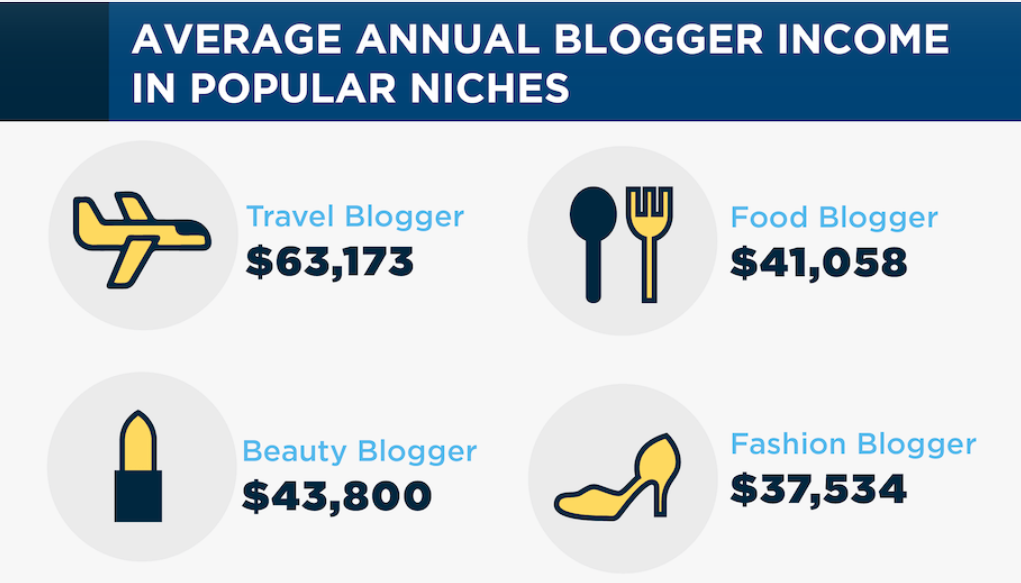
Some niches are more lucrative than others: Within the finance niche, blogs such as ThePennyHoarder and DollarSprout reportedly brought in over $1,000,000 a year. That said, it's possible to hit the six-figure income mark annually via other blogging niches.
Lindsay and Bjork Ostrom from the food blog Pinch of Yum reportedly earn upwards of $30,000 - $50,000 per month (mainly through advertising, sponsored content, and affiliate links), while Abby Lawson from Abby Organizes, a blog focused on home decor and organization, made up to $40,000 per month at its peak.
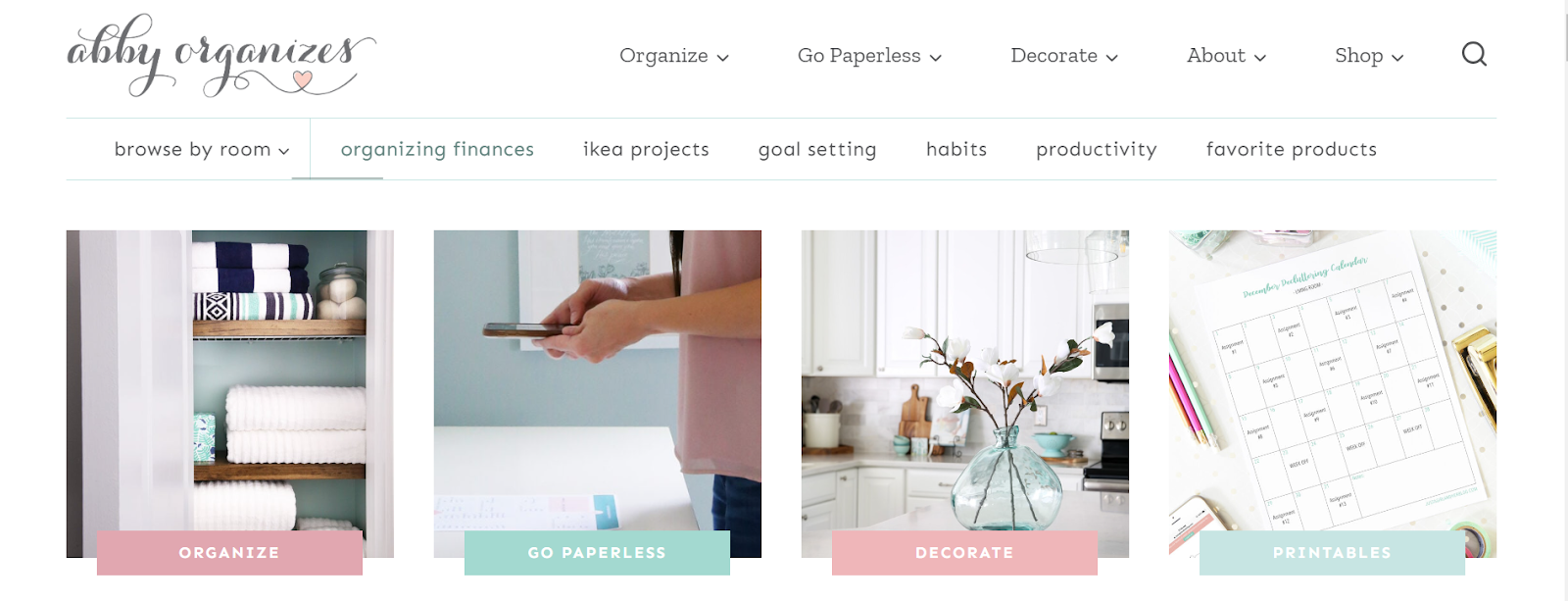
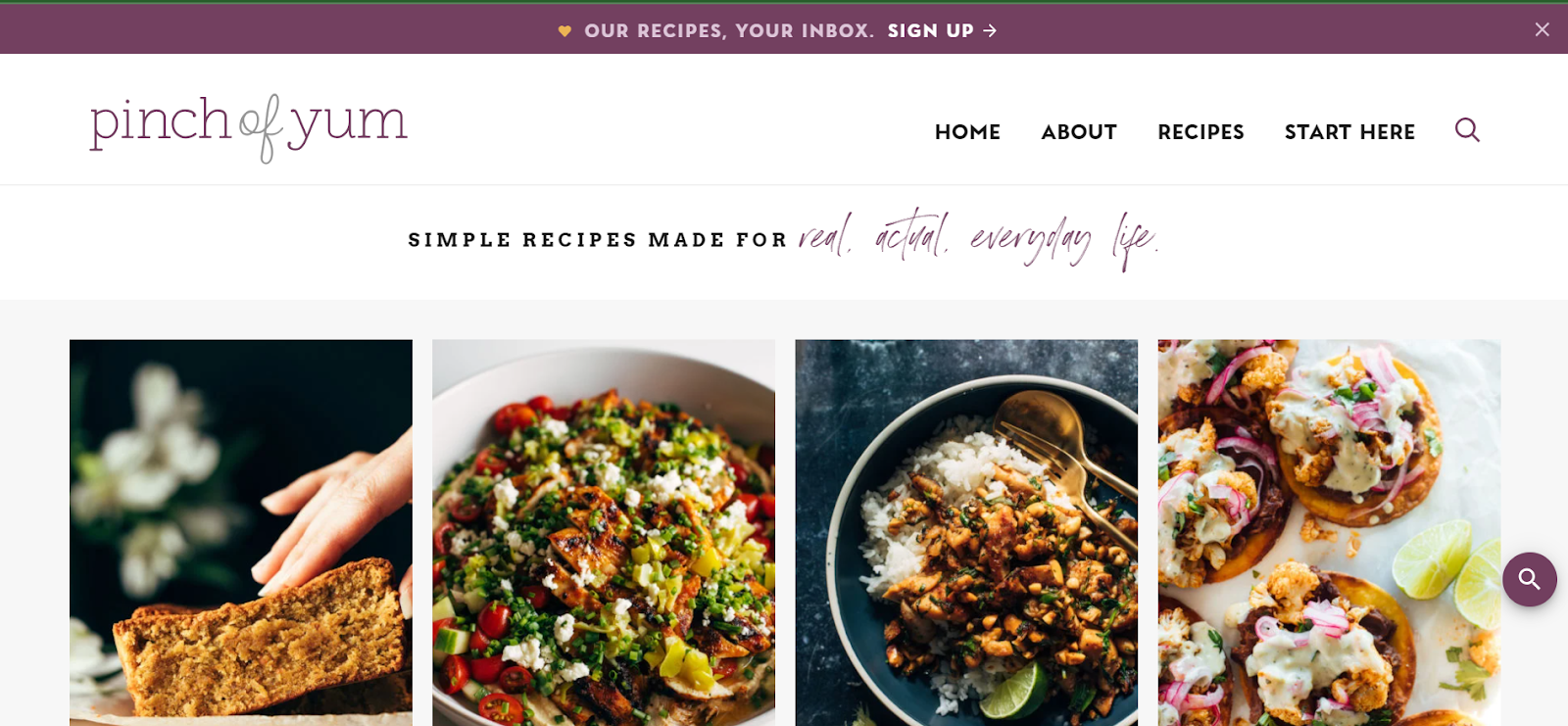
That said, it's important to remember that blogging isn't a quick path to overnight success. It’s the product of years of hard work, dedication, and strategic planning. Along with this, bloggers' earnings can fluctuate based on many factors, including market trends, audience engagement, and changes in advertising platforms’ algorithms and monetization strategies.
By staying current with trends around your blog niche, tracking evolving audience preferences, and frequently updating older or lower-quality content, you can stay on top of your blog’s potential to generate revenue.
Digital Products That Bloggers Can Monetize
Bloggers have endless opportunities when it comes to monetization via digital product sales. Marketplaces like Whop make it easy to sell various digital products online, so let’s take a look at a few of those options.
Newsletters
Email newsletters are an important medium for bloggers to market their digital products as it’s a medium that’s not throttled by an algorithm. Plus, a survey by MarketingSherpa found that 72% of people prefer to receive promotional content through email, compared to just 17% who prefer social media.
Katelyn Bourgoin is a blogger who uses newsletters effectively to promote her content. She calls herself “The Customer Whisperer” and puts together the widely popular “Why We Buy” newsletter aimed at making learning buyer psychology and its application to marketing fun.
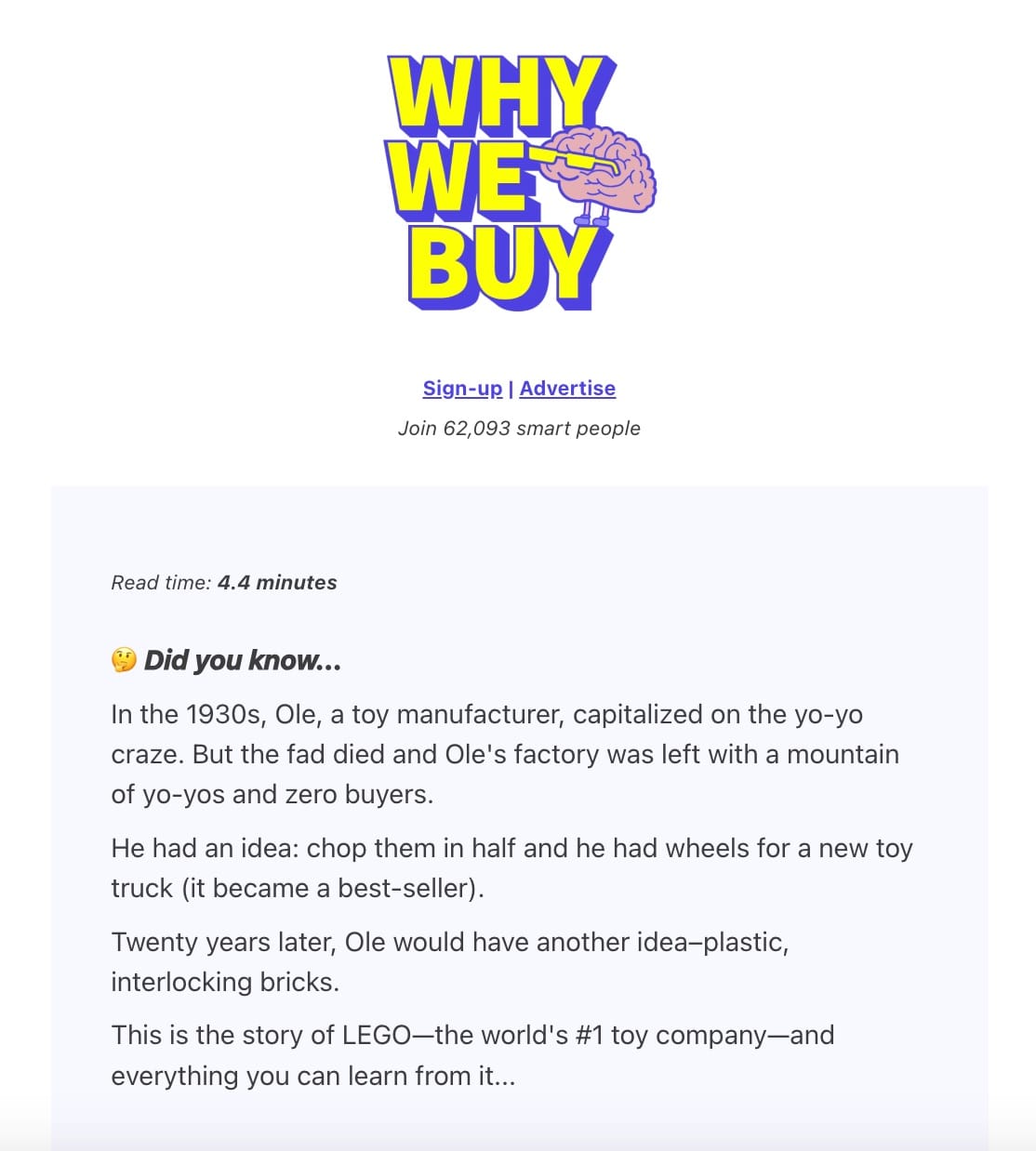
What’s more: Bloggers who register themselves as sellers on Whop can import customers directly into Mailmodo's system. Sign up and import your subscriber list, then use Mailmodo's interactive templates to craft engaging emails like sales sequences, product promotions, or new release announcements. To further personalize the content, you can also segment your newsletter audience and send personalized content so it feels tailor-made.
Once you have a core audience built up, you can further monetize your newsletter as a blogger by offering premium/paid subscriptions to exclusive, top-tier content.
Discord Communities
A Discord community is a digital forum where people can gather online and discuss ideas. For instance, you might find a Discord dedicated to writers or hobby bloggers. Discord communities have become a favored method for bloggers and their followers to connect and converse, making it a two-way conversation rather than a one-sided information dump. Tim Urban, author of the popular blog 'Wait But Why', for example, uses Discord to interact with his subscribers and fans.
Bloggers who use Discord as a monetization strategy can produce income through this avenue by selling exclusive access to their Discord communities via Whop. Subscriptions can range from $2.99 - $199.99 per month in price, which shows there’s a high income opportunity here.
Templates
Bloggers can leverage their creativity and expertise in the digital marketing world by creating and selling templates. Digital templates are great digital products for bloggers to sell because they help others quickly re-create a tactic, strategy, or process following your expert guidance. Whether it’s a digital template for organizing your closet or a worksheet to help with meal prep, the options here are endless.
Here are a few other ideas for templates bloggers can sell:
- Canva Templates: Canva is a popular platform for creating digital designs with a user-friendly interface and a vast library of design elements. Not everyone knows where to begin with this work, though. Food bloggers, for example, can sell food-themed templates for social media posts, banners, blog graphics, and more so that followers have a simple roadmap to follow. Maliha from The Side Blogger is a great example - within a year, she was making well over $1,000 every single month from selling Canva templates.
- Digital Product Templates: By selling paid/premium templates for eBooks, course outlines, or presentation decks, you can help fellow content creators produce and package their knowledge professionally.
- Email Templates: Many professional bloggers have been through the grind of cold-pitching their services to brands in their early blogging days. Bloggers can leverage that expertise to build email campaign templates, newsletter templates, and sales-related templates that help individuals save time while maintaining a strong brand identity.
Courses
Online courses are a budget-friendly and accessible way for people to get information or advice on almost any topic.
Bloggers who are experts in their field have started cashing in on the opportunity, using online course platforms to teach what they know. The best part— online courses incur lower operational costs, so profit margins can be significant. In some cases, you may not even have to teach the course live; the pre-recorded course is sent out to those who purchase it, making it easy to scale up.
When marketed effectively, online courses can be a solid income stream for bloggers while deepening credibility in your chosen field.
How to Make Money Blogging in 2024
The biggest advantage of earning income via blogging is that you can be your own boss. While blogging is typically a side hustle, many people take it up hoping that one day it will consistently pay enough to make it a full-time gig.
If you focus on delivering value, monetization opportunities will follow. To stand out from the competition, you need a comprehensive and well-thought-out blog strategy. Here are some key points to consider if you’re serious about making money via blogging in 2024.
Choose a profitable niche
A niche is a specific area within a broad topic. For example, 'vegan recipes' is a niche within the topic of 'Food'. By choosing a niche for your blog, readers build a clear association with your content over time. They know what to expect when they visit your site, improving your chances of being their first port of call when they’re seeking advice. But how do you know which niches are profitable?
Use this quick checklist:
1. You’re skilled at or interested in the topic: Blogs require consistent, high-quality content to monetize them. You are more likely to stick to blogging if it's a niche you enjoy, and the likelihood of generating money will increase.
2. There’s low competition: Popular blogs in your niche indicate other bloggers are making money in it. You can easily assess keyword ranking difficulty via a Google search. It'll be much harder to drive organic traffic if big-name brands (with fat marketing budgets) dominate the first page of search results.
3. There’s obvious monetization potential: Evaluate monetization opportunities for each shortlisted niche. Find out if companies within that niche pay to advertise their products on blogs. Are there affiliate programs that sell products in that industry? These are sure signs of a profitable blog niche.
Promote your blog
Learning the art of digital marketing is key to making a living as a blogger. A basic understanding of marketing tactics like SEO and SEM can generate thousands of page views for your blog, but that's not enough. To succeed in making money as a blogger, you need to build relationships with your audience, letting them experience and interact with your most authentic self.
For example: Photoblogger Brandon Stanton shares stories of everyday people he meets on the streets of New York, delving deep into their lives. This vulnerability in storytelling creates a profound sense of empathy and connection among his audience.
Strong relationships build loyalty, which gives you a unique advantage: the ability to truly influence your followers’ purchasing behavior. When you hit that sweet spot as a person with influence, you unlock opportunities for driving affiliate revenue, brand partnerships, and more.
Identify which social media sites your audience prefers and the ones that fit your niche. Start small — you don’t have to be on every platform, but prioritize the channels where your audience is present. Consider guest blogging, too. Partnering with fellow bloggers is a great way to get in front of new, relevant audiences and expands your opportunities to reach new followers.
Be the face behind the blog
While promoting your blogs on social media is undoubtedly important, your followers want to know the blogger behind the keyboard, too. More and more bloggers are focusing on telling their own stories and providing behind-the-scenes glimpses into their work. This strategy helps in building a personal brand that goes beyond the blog.
Joanna Goddard is a noteworthy example. Her blog "Cup of Jo" distinguishes itself via Joanna's personal tone and approachable content, often with insights from her own life, including her experiences as a mother, her relationship advice, and her favorite products. Over the years, Joanna has built a loyal community of readers by consistently being the relatable and trustworthy face behind her brand.
Don’t be afraid to show off who you are - your values, passions, and personality. Let your most authentic self shine through when you share a personal update or reply to followers’ comments. Instagram Stories and Facebook Stories are other engaging ways to share a sneak peek into your life and interact with your followers.
Build an email list
To start making money from your blog, you need a loyal reader base that values your recommendations.
One of the best ways to do this is to build a dedicated email list for your blog. Getting people to opt in to receive emails about your blog is a fairly big achievement: you're essentially being given permission to enter one of their most personal digital spaces—their inbox. To encourage blog visitors to sign up for your mailing list, use incentives such as free checklists, resources, or PDF assets (such as printable recipes). Once they've signed up, continue to nurture the relationship with informative, educational, or entertaining content. Over time, your audience will be buying products based on your recommendations.
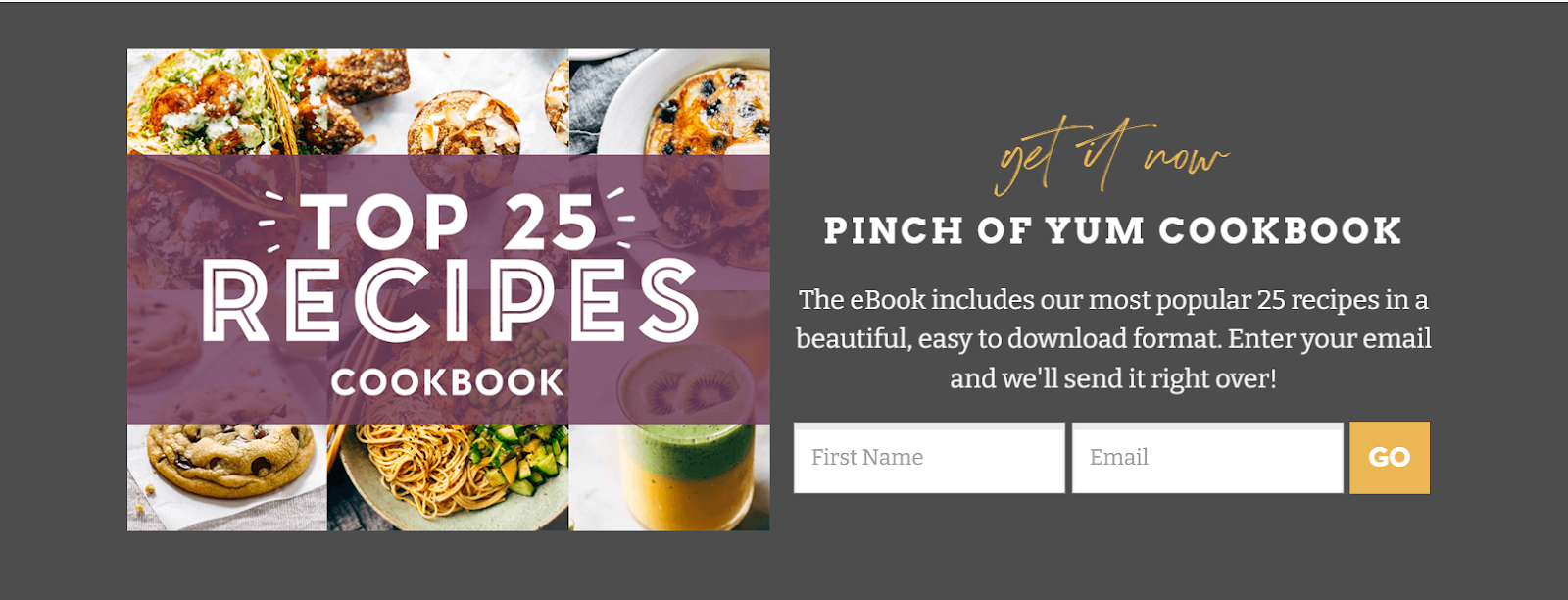
Lily Ugbaja initially started her blog FindingBalance.Mom because she wanted to stay home with her son, do something she loved, and still make money. It took her just two weeks to start making money from her blog.
“I used emails to promote my products and relevant affiliate products with tripwires and Facebook groups,” she said. “You add lead magnets to your site so people sign up after reading your article. Instead of a success page, you share a one-time offer—a low-end product at a super discounted rate…just $7 in my case.”
By the end of the first month, despite fewer than 1,000 monthly page views, Lily earned a cool $100, which soon became a few thousand dollars.
Write sponsored product reviews
All businesses want social proof to show their customers that their products are worth buying. One way to collect that is by paying influential bloggers to publish reviews.
Contact your favorite brands and see if they'd be interested in partnering with you on a product review. If it's a product you use already, this tactic doesn't cost you a thing; you get paid to share your opinion of a product you already own and love. If it’s a new product you’d like to try, you get the advantage of trying new items either in exchange for a free product or as a paid review.
That said, keep in mind the FTC has a set of guidelines that ecommerce merchants and the bloggers being paid to write sponsored reviews need to comply with. To avoid landing your blog in hot water, ensure you do the following:
Disclose if you’ve been incentivized to write the review: If you’re being paid to publish a review, disclose upfront that you may make a commission for any product purchases.
Be honest: Share a balanced view of the product— the good and the bad—so readers can make an informed purchase decision.
We see this in action via The Yard and Garden, a blog that adds an affiliate disclosure mentioning that the article may contain links to partner websites where they may earn a small commission.
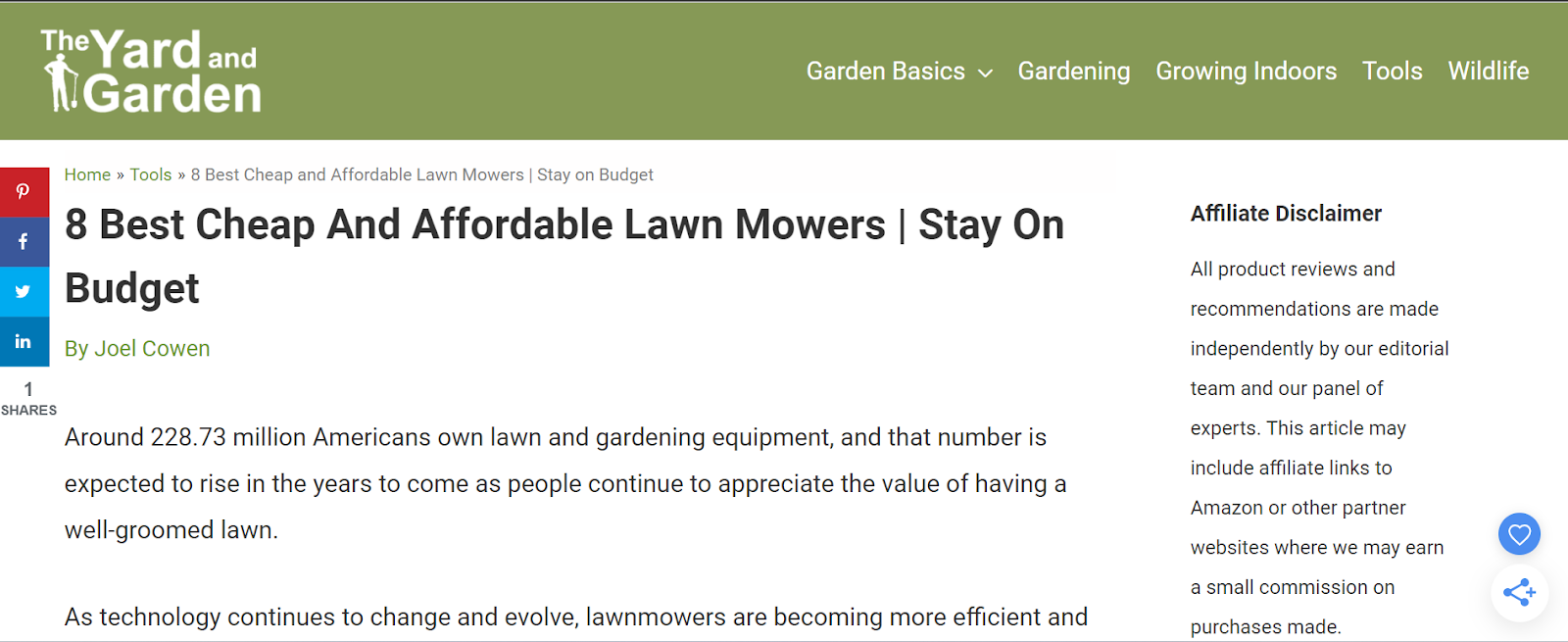
Sell advertising placements
Companies pay bloggers for advertising placements on their websites. Once you’ve grown a loyal and engaged audience base, lend advertisers your blog space in exchange for a fee. There are two ways to do this:
- Negotiate with companies: Find out if companies in your niche are interested in advertising on your site. This approach is more time-consuming and requires strong negotiating skills, but it can net the most money when done well.
- Use an advertising network: Platforms like Google AdSense, Mediavine, and Raptive use space on your blog and handle advertisers' billing. Embed a code and get paid to show ads on your blog.
Emily Brookes from Haus by Emily May says that display ads have been the most lucrative sales channel for her blog. She cites that 60% of her blog's revenue comes from there. "Ads make me money consistently each month, even when I haven't published any new content," she said.
Bloggers can sell various types of ad placements to monetize from their blogs. Some of these are:
- Display Ads: These are the standard banner ads that appear on various parts of your blog, such as alongside the content, header, and footer.
- Native Ads: These paid content pieces are made to fit in seamlessly with your usual blog content. They can be articles, infographics, videos, etc.
- Podcast Ads: If you run a podcast alongside your blog, you can choose to sell audio ad placements to brands. These are usually short advertisements that play at the beginning, middle, or end of a podcast episode.
- Newsletter Ads: If you have an email newsletter for your blog, you can sell ad placements in the emails. These can be banner ads, sponsored content, or dedicated emails sent on behalf of a brand.
The type of ads a blogger can sell largely depends on the audience of the blog, the size and location of the ad, and the blog's overall reach and engagement.
Sell digital products
Once you have your digital product idea, know how to create it, and are ready to sell, you’ll need to create demand for it. Collecting pre-orders is a way to establish whether or not there is demand for what you’re selling.
Consider this a "soft launch" period, during which you can offer discounts or additional offerings in return for feedback. This allows you to identify and fix any kinks and gather customer feedback. This works well particularly when you’re selling online courses. In fact, many sellers start selling their idea before they even have the entire course figured out.
A key aspect of selling digital products is finding the right marketplace. If you know how to set up your website and activate an online store, your digital products can live there. However, a digital marketplace may be a more powerful platform to drive product sales instead of trying to get people to your website each time.
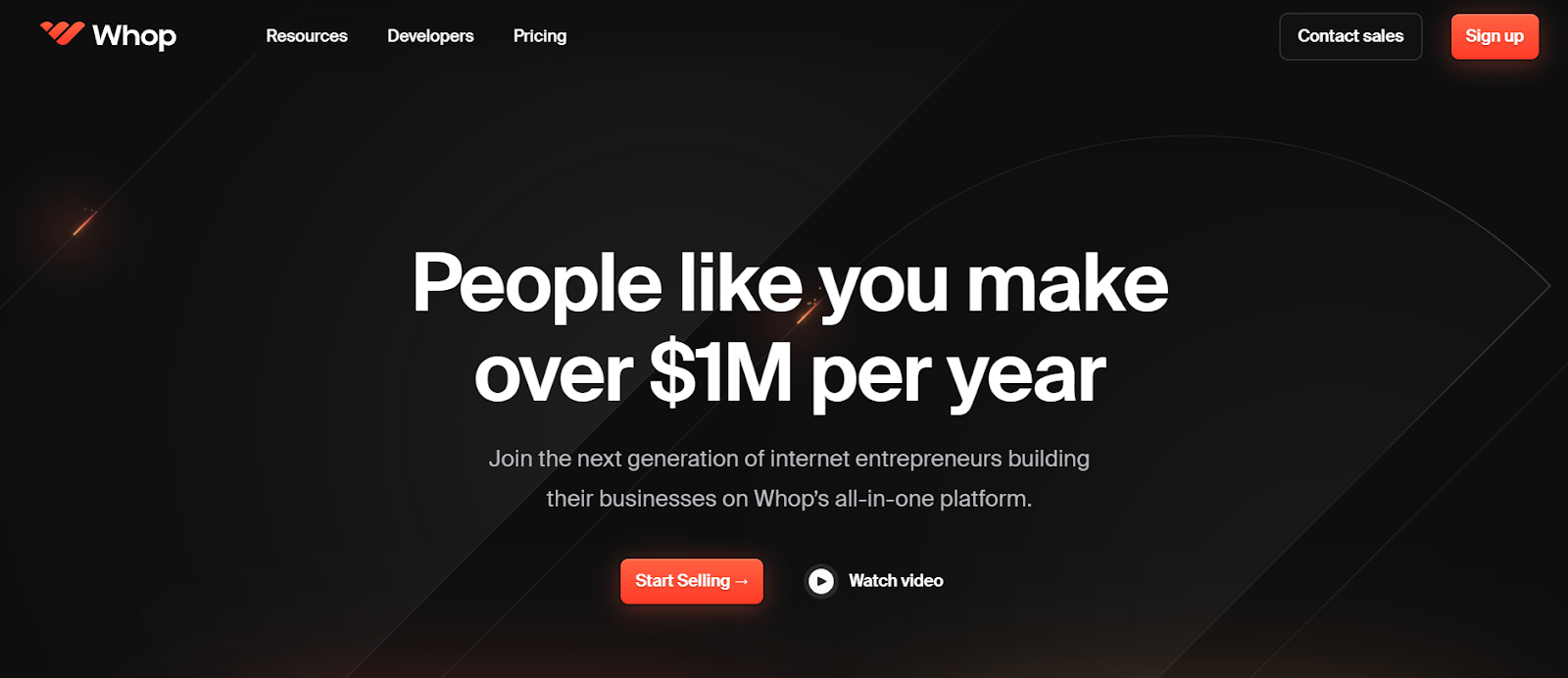
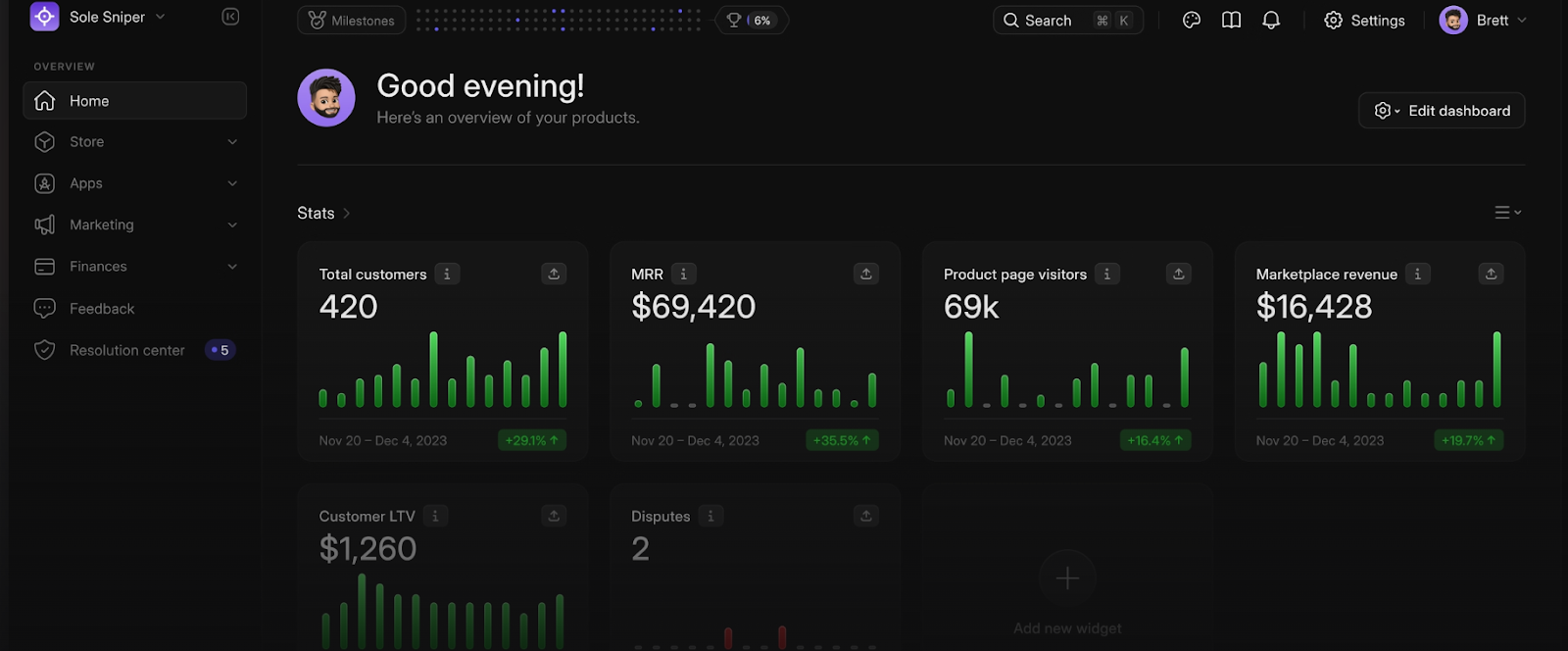
Finally, you can’t drive product sales without a solid marketing plan. Here are some ideas:
- Social media marketing: Share your product on social pages like Facebook, Instagram, YouTube or TikTok. Video content is one of the most popular formats that allow you to gain huge traction.
- Search engine optimization: SEO helps your product page rank higher when people search for products like yours.
- Email marketing: Email campaigns are a way to gather contact information of potential customers. You can use this information to send them relevant future offers.
- Affiliate marketing: Leverage third-party marketers with an established following to promote your products.
How Long Does it Take to Start Making Money?
While there are several ways to make money through blogging, and can technically make money right away, it usually takes a bit more time. A few people with an entrepreneurial mindset might earn their first $100 fairly quickly.
There may be a handful of bloggers who’ve reached $100,000+ in their first year of blogging. However, there are many more who’ve been blogging for two to three years and are still struggling to reach a consistent $100/mo in blog income. The data suggests that it could take up to five years to be making around $25,000 per month.
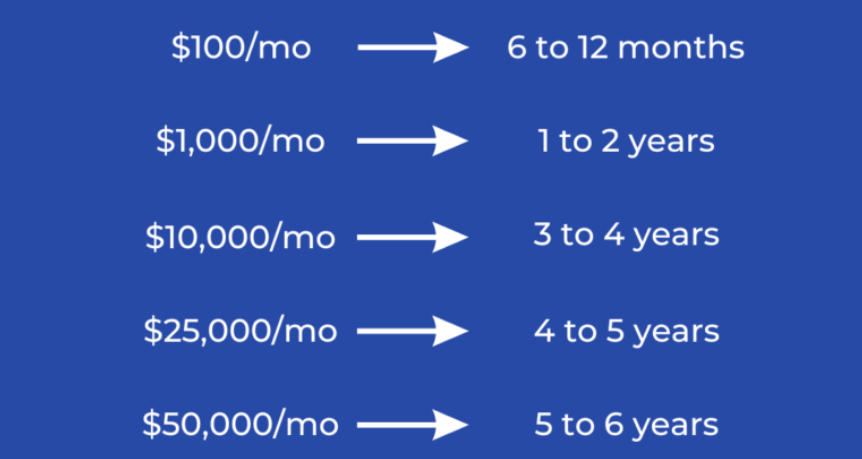
This hard work pays off, and we see this through successful examples like that of Perez Hilton. This blog, run by Mario Armando Lavandeira Jr., was launched in 2004. It quickly rose to fame by posting controversial gossip and entertainment news about pop stars, movie stars, and sports stars. This blogger’s ability to find and publish inside information made his blog a go-to source for many seeking the latest celebrity news. Today, he has a net worth of $20 million.
Pete Cashmore, the owner of Mashable, is another worthy example of long-term blogging paying off. Mashable was launched in 2005, and Pete Cashmore turned it into one of the most profitable multi-niche blogs on the internet. The blog's success was so immense that it was later sold for an estimated $50 million.
Making Money Through the Business of Blogging
With more than 600 million blogs across platforms like Tumblr, WordPress, Medium, and LinkedIn, the growth within this marketplace is significant. However, turning your blog into a money maker isn’t impossible (even with all that competition for attention.)
Start small and start slow: Your focus should be on building great content and a loyal base of followers before you experiment with monetization tactics. Choose an appropriate blog niche, create helpful content, and with time, you’ll effectively monetize your blog. Investing effort in these steps will set you on the path toward earning money as a blogger.
Ready to get started on the path toward monetization? Bloggers can sign up and start selling for free with Whop!




